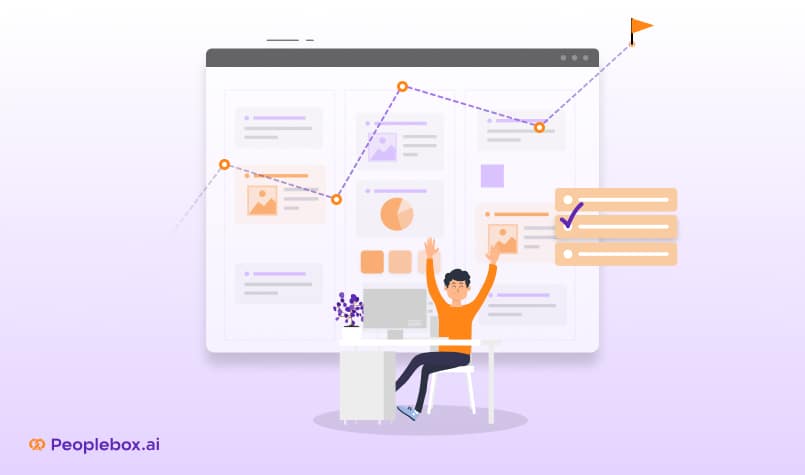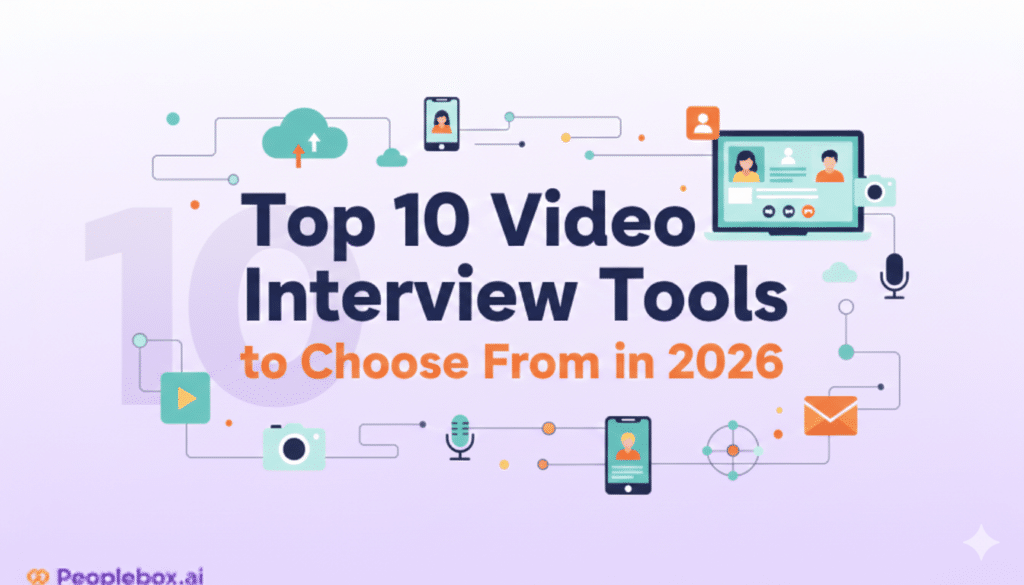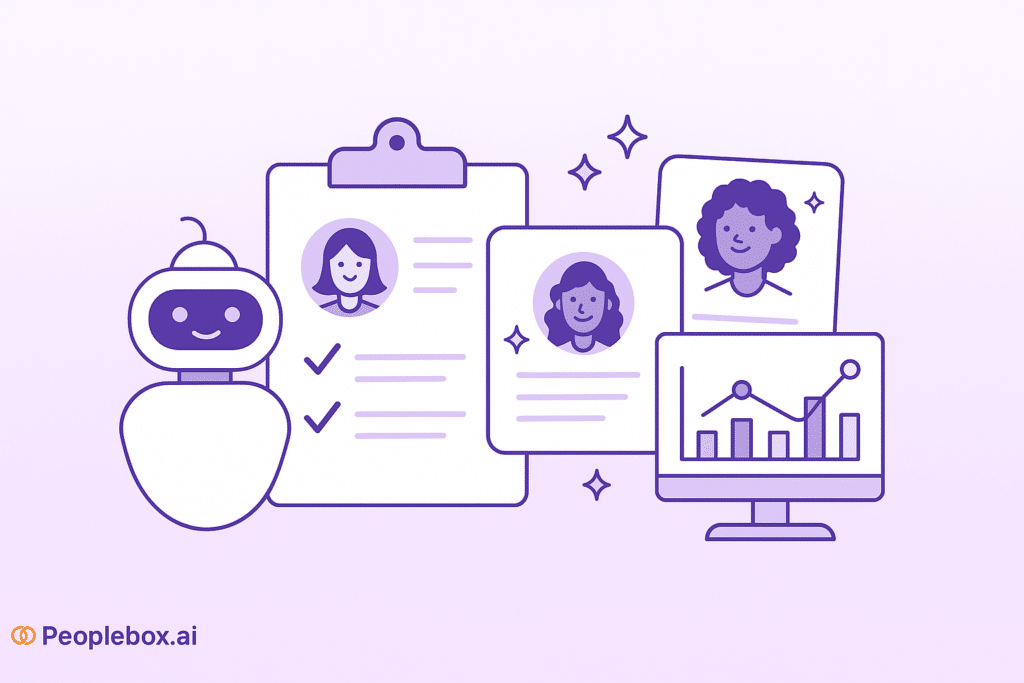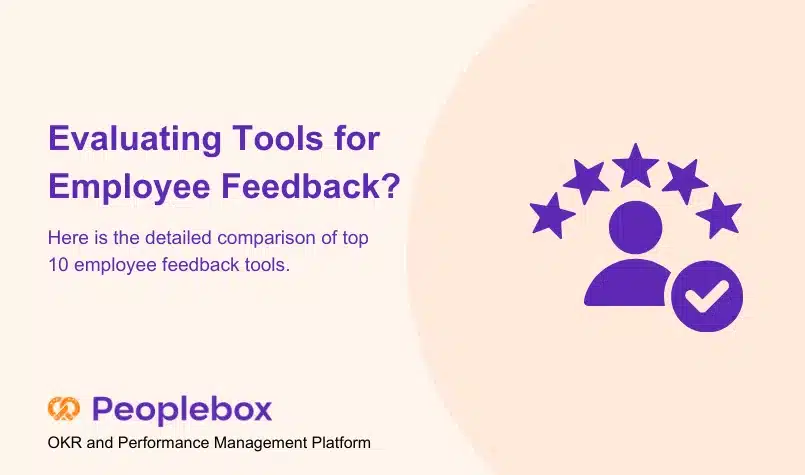TL;DR
Integrated Talent Management (ITM) aligns your recruitment, development, performance, and retention processes to work towards the same goals. It improves productivity, increases employee retention, and supports data-driven decision-making.
ITM reduces costs by streamlining operations, enabling companies to adapt quickly to changes while supporting employee growth. If you want to enhance your company’s workforce management, ITM is the solution you need.
Let’s talk about something a lot of companies deal with but rarely admit: your people processes might feel a little all over the place.
Maybe recruitment is doing one thing, learning and development is doing another, performance reviews are just… happening once a year (barely), and no one’s really sure how it all connects. It’s not that anyone’s slacking. It’s just that everyone’s moving fast, trying to get stuff done but without a shared plan or bigger picture.
And the effects? They show up everywhere. High employee turnover. Burnout. Disengaged teams. Managers are constantly firefighting. And that nagging feeling that things could be so much smoother if the right pieces were just connected.
Here’s the good news: they can be. And that’s where Integrated Talent Management, or ITM, comes in.
Now before your brain checks out from hearing another HR term stick with me. ITM isn’t some corporate gimmick. It’s just a smarter, more cohesive way to handle your people strategy. This method shows what your business needs. It also considers your employees’ desires. Together, they can grow and succeed.
| So, What’s Integrated Talent Management Really All About? At its core, Integrated Talent Management (ITM) is about making everything work together, not in silos. Hiring, development, performance reviews, and retention shouldn’t be treated like separate checkboxes. They’re all part of the same story and ITM ties them together into one smooth, connected system. When each piece supports the others, your team doesn’t just function; they grow, perform, and thrive together. Think of it like a band. You can have a brilliant guitarist, an amazing drummer, and a powerhouse vocalist but if they’re not playing the same song, it’s just noise. ITM gets everyone in sync, so your team doesn’t just get things done they create something that works in harmony. |
Why Integrated Talent Management Actually Matters
We’re in a work culture where people don’t just want a job they want purpose, clarity, and growth. And companies? They want people who are aligned, productive, and here for the long haul.
1. Productivity goes up.
When everything’s aligned from hiring to performance tracking your teams stop wasting energy on clunky systems or unclear expectations. People can focus on doing their best work, not trying to figure out what their job even is.
2. People stay longer.
Most employees don’t leave because of one big thing. They leave because of the little stuff, unclear growth, feeling stuck, lack of feedback. ITM helps prevent all of that by giving people real paths forward.
3. Leaders make better decisions.
With connected systems and data, leadership isn’t guessing who’s doing well or what teams need help. They can actually see it and make informed, confident choices.
4. Your company becomes more adaptable.
Markets shift. Business goals change. With ITM, you’re not rebuilding your entire people strategy every time that happens. You’re adjusting a system that’s built to flex and evolve.
5. You save money (and time).
The cost of hiring and onboarding someone new only to lose them in six months is steep. The cost of underperformance? Even more. ITM reduces both, by keeping people engaged and setting them up for success from the start.
The Impact of Integrated Talent Management: Key Statistics You Should Know
Integrated talent management isn’t just a trend, it’s a proven driver of performance, retention, and growth. These key stats show why it matters.
1. Employee Engagement Boosts Productivity and Profitability
- 21% Higher Productivity: Gallup’s 2024 report shows that organizations with engaged employees enjoy 21% more productivity than those with disengaged staff.
- 17% Higher Profitability: The same report reveals that companies with engaged employees see 17% higher profitability.
2. Disengagement Costs the Global Economy Billions
- $438 Billion in Lost Productivity: Gallup estimates that disengaged employees cost the global economy about $438 billion each year in lost productivity.
3. High Costs of Employee Turnover
- 50–60% of Annual Salary: According to the Society for Human Resource Management (SHRM), replacing an employee can cost between 50% and 60% of their yearly salary.
- Up to 200% of Annual Salary: When factoring in training, lost productivity, and other elements, turnover costs can soar to 200% of an employee’s annual salary.
4. Companies Recognize the Importance of Retention and Engagement
- 87% View Retention and Engagement as Critical: Research by Josh Bersin found that 87% of companies consider retention, engagement, and culture as important imperatives.
What Makes Up a Good ITM Strategy?
Let’s break it down. These are the key building blocks that, when connected, make Integrated Talent Management actually work:
1. Workforce Planning
This is about knowing what kind of talent you’ll need now, next quarter, and a year from now. You’re looking ahead instead of just filling positions as they come. This approach helps you create a team that meets today’s needs and supports future goals.
2. Talent Acquisition
Hiring isn’t just about filling a vacancy; it’s about finding individuals who resonate with your culture and vision. ITM makes sure you’re not just bringing in talent, but the right talent. ITM makes sure you’re not just bringing in talent, but the right talent.
3. Onboarding
It’s their first real experience of being part of your team so make it count. Onboarding should feel like a warm hello, not a mountain of paperwork.
New hires should feel supported, comfortable, and ready to jump in, not confused or left wondering who they’re supposed to ask for help.
4. Performance Management
This isn’t just an annual form or one-off rating. With ITM, performance becomes a regular, ongoing conversation. It’s about clear goals, honest feedback, and helping people grow, not checking boxes.
5. Learning & Development
People want to grow. Whether it’s formal training or learning through experience, ITM makes development a part of everyday work. Not a one-off initiative, but a habit baked into the culture.
6. Succession Planning
Who’s ready to take on more? Who’s next in line for leadership? Succession planning helps you answer those questions before there’s an urgent gap. ITM makes sure you’re not just reacting, but preparing.
7. Employee Engagement & Retention
When people feel seen, supported, and aligned with your mission they stay. ITM helps build those connections by tying personal goals with company goals and creating a space where people feel they matter.
Top Tools That Make Integrated Talent Management Easier
Managing the entire employee journey is no small task but the right tools make it smoother, smarter, and a whole lot easier.
| Tool | Description |
| Peoplebox.ai | It’s an all-in-one platform that brings everything together with performance reviews, goals, feedback, and development so your team stays aligned, focused, and actually gets things done. |
| BambooHR | Made for small to mid-sized teams, it keeps everything recruitment, onboarding, and performance tracking in one place. It’s simple, clean, and just easy to use without the hassle. |
| Workday | A heavyweight platform made for larger companies. It handles everything from hiring to retirement, with powerful analytics and room to scale as your business grows. |
| Cornerstone OnDemand | Ideal if you’re big on employee growth. It focuses on learning and development, helping you create custom learning paths and track progress across teams. |
| ADP Workforce Now | An all-in-one HR system that handles payroll, benefits, hiring, and performance seamlessly. Ideal for larger teams seeking convenience. |
| UKG Pro (formerly Ultimate Software) | Take care of HR, payroll, and talent while keeping your people at the heart of it. It’s flexible, people-first, and fits teams of any size. |
How to Actually Start with ITM
Thinking about getting started with Integrated Talent Management? Don’t worry it doesn’t have to be overwhelming. Here’s an easy way to ease into it:
1. Spot What’s Not Working Take a look at your current people processes. What feels clunky, disconnected, or just plain frustrating? Maybe onboarding drops the ball or feedback feels random. Start there.
2. Pick the Right Tools Once you know your gaps, find tools that bring things together hiring, performance, development, all in one system. Don’t go with what’s popular, go with what fits your team.
3. Bring Everyone Along for the Ride
Change doesn’t have to be overwhelming. Start small. Share the “why” behind what you’re doing, and begin with just one focus area. What really matters is getting both leadership and your team aligned and on board.
4. Keep Listening and Evolving
Don’t just set it and forget it. Check in with your team regularly what’s clicking, what feels off, and where things could be smoother. ITM should grow with your company, not stay stuck in version 1.0.
Okay… So How Do You Start?
You don’t have to do everything at once. ITM isn’t about a huge overhaul. It’s about being intentional and building piece by piece.
Here’s how you can begin:
1. Use tools that talk to each other.
Ditch the disconnected systems. Look for platforms that integrate hiring, onboarding, performance, and development. It saves time and reduces confusion for everyone.
2. Align your people’s goals with business goals.
If your company is aiming for rapid innovation, but your talent strategy is focused on maintaining the status quo that’s a problem. Make sure your talent efforts support your actual direction.
3. Create a culture of growth.
Learning should feel normal, not a once-a-year workshop. Offer training, mentorship, and stretch projects. Encourage curiosity. Let people develop with the business.
4. Make feedback a regular thing.
Employees shouldn’t be guessing how they’re doing. Create a space for frequent, honest, and helpful conversations. The more open the feedback loop, the stronger the trust and performance.
5. Keep checking in and improving.
ITM isn’t one-and-done. It’s something you evolve over time. Keep asking your team what’s working, what’s not, and be willing to tweak things as you grow.
| Challenges You Might Face Nothing worth doing is ever challenge-free. Here are a few things that might come up and what to do about them: Data silos? Invest in integrated platforms that connect your systems. It’ll save you major headaches down the line. Change resistance? Be transparent. Explain the why. Give people space to ask questions and adapt. Change is hard but manageable when people feel included. Limited resources? Start small. You don’t need to roll everything out at once. Pick one area like onboarding or performance and build from there. Scaling challenges? Choose tools that grow with you. Your ITM approach should be flexible enough to expand as your company does. |
Looking Ahead: The Future of Talent Management
The future of ITM is going to be even more connected, more personalized, and more tech-supported. AI will help companies predict workforce needs, personalize learning paths, and spot growth opportunities faster than ever.
But here’s the thing: even as tech improves, the heart of ITM won’t change. It’s still about people.
People who want to do meaningful work. Grow. Contribute. Be part of something. Your job is to make that possible and ITM is one of the most powerful ways to do that.
How Peoplebox.ai Makes Managing People So Much Easier
Let’s face it trying to stay on top of hiring, goals, feedback, and development can feel like a constant scramble. You’re using different tools for different things, stuff gets missed, and it’s tough to get a clear picture of what’s really going on. That’s where Peoplebox.ai really helps.
One Place for Everything
No more bouncing between platforms. With Peoplebox.ai, everything’s in one spot: performance reviews, goal-setting, feedback, and growth plans. It just makes life easier.
Everyone’s on the Same Page
From the moment someone’s hired to helping them grow, Peoplebox.ai helps you keep all your people processes working together. So your team stays aligned, and nothing feels random or out of sync.
It’s Super Easy to Use
You don’t need to be an HR expert or tech pro to use it. It’s clean, simple, and just… works.
People Actually Feel Supported
It’s not just about tracking performance. With built-in feedback and growth tools, Peoplebox.ai helps your team feel seen, supported, and motivated to do their best.
You Get the Right Info, Fast
Want to know what’s working, who needs support, or where to focus next? Peoplebox.ai gives you real-time insights that actually make sense.
It Grows With You
Whether your team’s just getting started or scaling fast, Peoplebox.ai adjusts to your needs without making things complicated.
Peoplebox.ai helps you take care of your people without all the stress. It brings everything together, so your team can do their best work and actually enjoy doing it.
Frequently Asked Questions(FQAs)
What is Integrated Talent Management (ITM)?
It’s a way to connect everything related to your people hiring, performance, growth, and retention into one smooth, aligned system. Everyone moves toward the same goals, and it helps the business run better.
Why does ITM matter?
ITM helps fix common issues like high turnover or scattered processes. It brings everything together so your team is motivated, your workflows are efficient, and your business stays ready for change.
How does ITM help with retention?
When people have clear growth paths, regular feedback, and real development opportunities, they’re more likely to stay. ITM makes sure they feel supported and see a future with your company.
What are some good ITM tools?
- Peoplebox.ai – Great for performance, goals, and feedback
- BambooHR – Easy-to-use for small to mid-sized teams
- Workday – Powerful tool for big organizations
- Cornerstone OnDemand – Strong on learning and development
- ADP Workforce Now – Full HR suite for larger teams
How do I start using ITM?
Start by spotting what’s not working. Pick tools that fit your needs. Roll things out gradually, focus on one area at a time, and listen to your team’s feedback as you go.
What are the main benefits?
- More productivity
- Better retention
- Smarter, data-backed decisions
- Cost savings
- Flexibility to adjust as your business grows
How does it align with business goals?
ITM connects talent efforts directly to business priorities. It helps employees see how their work matters, which boosts motivation and performance.
How do I measure if it’s working?
Look at things like:
- Employee engagement scores
- Turnover rates
- Team productivity
- How many leaders are promoted from within
- Participation in training or development programs






